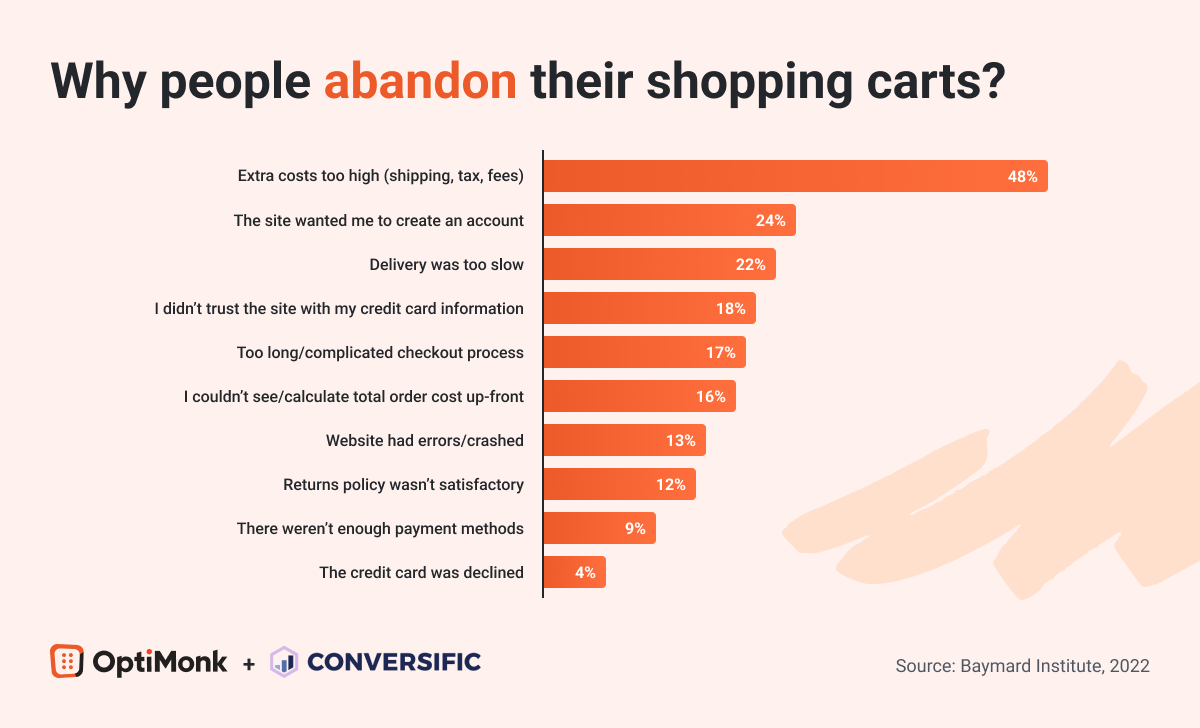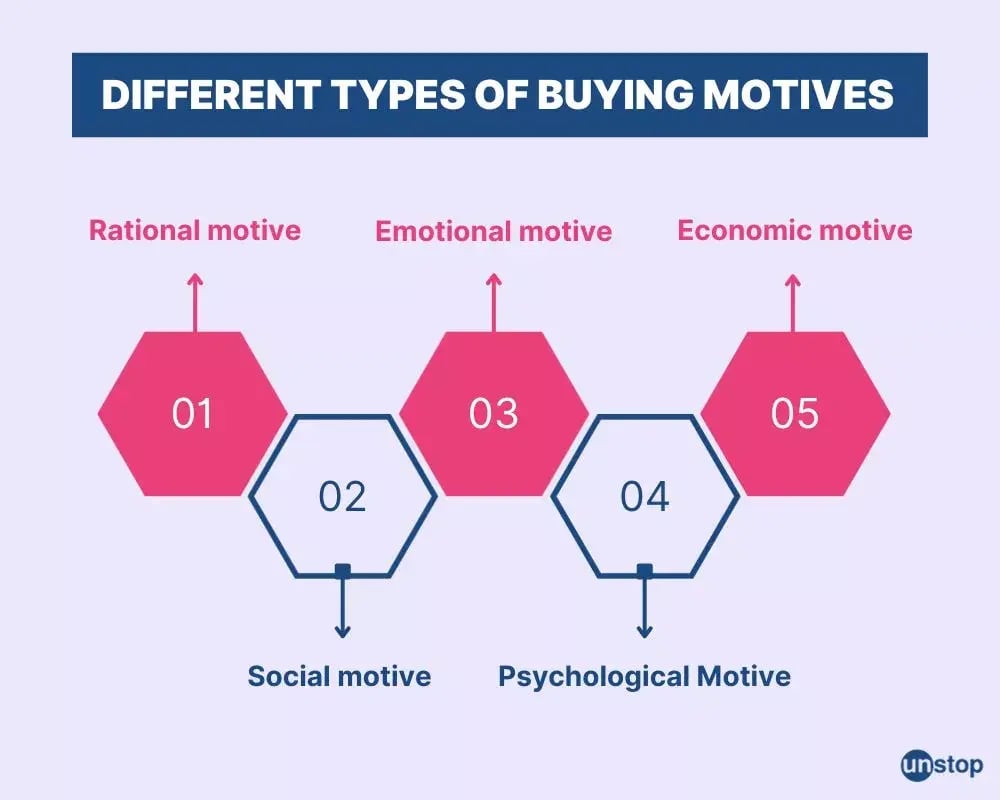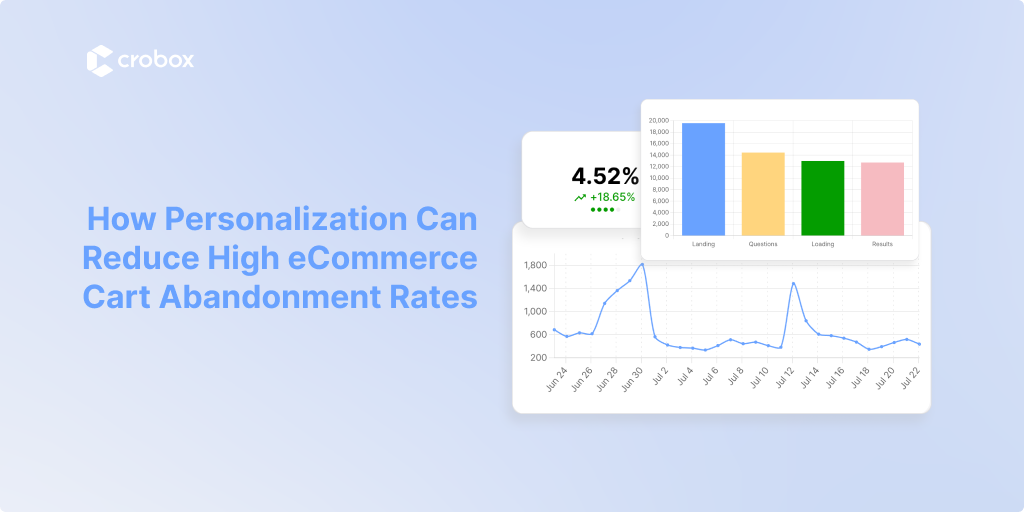Very often, eCommerce businesses lose billions due to cart abandonment. When visitors leave their carts without completing a purchase, it’s more than just a minor inconvenience - it can have a long-term impact on business growth.
Very often, eCommerce businesses lose billions due to cart abandonment, and a ton of shopping carts are left behind without purchase. When visitors leave their carts without completing a purchase, it’s more than just a minor inconvenience - it can have a long-term impact on business growth. Many businesses invest substantial resources to attract customers to their websites, only to lose potential sales at the final stage of the online shopping journey.
So why is eCommerce cart abandonment such a persistent issue? The reasons are different - unexpected shipping costs, complicated checkouts, indecision, and similar scenarios that often push customers away at the last step. Businesses need to focus on creating more engaging shopping experiences, and personalization helps to address the exact pain points that lead to cart abandonment. It reduces indecision by guiding customers to the products they are most interested in, simplifies navigation, and eliminates unnecessary barriers in the checkout process.
In this blog post, you will find how personalized strategies, such as using a product advisor, can transform high cart abandonment rates into higher conversion rates. Let’s see how to reclaim those lost sales with a specific guided selling approach.
Why Do Shoppers Leave?

Uncovering the reasons for cart abandonment is the only way to fix them | Source
Before we start, let’s understand why potential customers would leave the shopping cart and never pay for the chosen products. Cart abandonment happens when a customer adds items to their online shopping cart but leaves the website before completing the purchase. This is a common challenge in eCommerce, and it results in significant revenue loss.
There are several reasons why shoppers abandon their carts, including:
- Unexpected costs like high shipping fees.
- Complicated or long checkout processes that frustrate customers.
- Distractions or slow load times that lead customers to leave the site.
- Lack of trust in the site’s security during payment.
For online stores and brands, these eCommerce cart abandonment issues lead to more than just a loss of money. They also represent missed opportunities to build lasting customer relationships and a chance for recurring revenue. Fixing these problems can make the difference between a lost sale and a loyal customer, so we will address how personalization reduces friction and encourages customers to complete their purchases in the following section.
How Personalization Drives Customer Choices
If your customers are unsure about which product to choose, the chances are low that they will make a purchase. Personalization is here to help customers feel more confident in their choices by showing them an item they previously viewed or suggesting similar products. This personalized approach helps clear up doubts, as the previously analyzed behavior and preferences are used to make their shopping experience as smooth as possible.
Understanding how customers interact with your website and what drives their decisions is key to unlocking more personalized shopping experiences. There are two types of data you can use to achieve this:
- Behavioral data – Focuses on how customers navigate your site, including clicks, page views, and time spent on different pages.
- Psychographic segmentation – Provides insights into customers' interests, values, and lifestyle choices.
By analyzing this data, eCommerce businesses can take actionable steps, like using a product finder tool to personalize different touchpoints of the shopping experience. For example, if a customer frequently browses a specific category or spends time comparing similar products, the platform can suggest items that match their taste or needs. Such a feature can remove the overwhelming number of endless options and narrow the customer's path toward completing their purchase.
Some practical solutions for eCommerce brands:
- Implement A/B testing to compare different product suggestions or campaigns. This helps you analyze customer behavior and fine-tune your recommendations. You can optimize your product finder or campaigns to improve engagement and conversions.
- Use psychographic data to create precise shopping experiences that match a customer’s values (e.g., recommending sustainable products to eco-conscious shoppers).
- Implement personalized email campaigns that follow up with customers based on their browsing history, offering them tailored promotions or reminders.
With this in mind, customers are more likely to complete their purchase because they feel understood and supported throughout their journey.
Data-Driven Personalization

You can't personalize the CX without truly investing in a data-forward strategy | Source
Focusing on data-driven personalization in your online store is a game-changer for reducing eCommerce cart abandonment and encouraging customers to complete a purchase. But, keep in mind that GDPR and data privacy are usually a blocker to personalization. At Crobox, we overcome this by relying on first-party data collected through behavioral triggers. Cookies are included to track behavior and there is no room for data or privacy breaches, ensuring compliance with data regulations while still delivering personalized experiences.
Instead of being bombarded with random recommendations, the customers will see products that are directly related to what they are interested in. Here are 3 examples of how data-driven personalization reduces cart abandonment rates:
- Relevant product suggestions: If a customer browses a particular product listing page, then a side panel or a notification will pop up for them to answer some questions and get recommendations. The platform can automatically suggest top-selling or highly-rated products in that category, making it easier for them to find and choose what they need.
- Cross-selling and upselling: After the site visitor interacts with the product finder and gets a result, they can still get relevant campaigns afterward even if they don’t add the item to the cart. The behavioral data from this scenario can identify opportunities to recommend matching products with the chosen item, for example suggesting a phone case when the customer is purchasing a smartphone.
- Targeted promotions: Personalization allows eCommerce brands to offer discounts or special deals on products the customer has shown interest in. For example, giving a 10% discount on every Halloween decoration product after buying a scary mask.
The key to this strategy’s success lies in relevance and offering a guided advisor that provides comprehensive and customized support to help indecisive shoppers complete their purchases. When customers abandon their cart after viewing multiple products in a specific category, it often signals they lack the confidence to make a decision.
You can re-engage them before they leave your site by:
- Prompting them with questions to better understand their needs.
- Tagging products based on their behavior that are most relevant to them.
- Highlighting customer reviews on a few product pages to provide social proof and build their confidence.
Streamlining Choices for Reducing eCommerce Cart Abandonment
You are probably guessing that when customers have too many options, they may experience decision fatigue, leading them to leave the site without making a purchase. Personalization is here with a powerful solution by streamlining options and guiding customers toward products that best match their needs.
Brands like ASOS have mastered this approach. This fashion brand uses advanced filters and engaging product recommendations, helping customers narrow down their choices quickly. Their recommendation features suggest items based on previous purchases, category browsing, and needs, allowing customers to see only the most relevant products. This keeps shoppers in line and prevents indecision that can lead to eCommerce cart abandonment.
The Product Advisor tool by Crobox is here to help you present relevant personalized products that will lower the risks of customers leaving the site. When customers feel confident that the products are aligned with their needs, they are more likely to buy them without feeling overwhelmed.
Personalized Follow-Up: Bringing Customers Back with Targeted Emails and Pop-Ups
A highly effective strategy to combat eCommerce cart abandonment is implementing targeted follow-up emails or pop-ups that remind customers of the items they left behind. You can use insights from customers' browsing behavior to tailor the communication with them and make it personal.
For example, follow-up emails can highlight the specific items the customer left in the shopping cart, paired with personalized product suggestions based on their browsing history. This approach makes the communication feel more like helpful advice rather than a generic reminder.
Pop-ups can work similarly. When a customer is about to exit the site, a strategically timed pop-up can display the items they added to their cart and offer personalized recommendations or a time-limited discount to complete their transaction. There are different product finder tool examples that you can implement in your eCommerce store in combination with marketing campaigns. Feel free to personalize everything you can for a successful customer journey without any sales losses.
Understanding Customer Motivations for Effective Personalization

Understanding the buying motives of your shoppers is vital for executing your strategies | Source
To decrease the high cart abandonment rates, it's crucial to go beyond basic demographics and implement psychographic segmentation into your personalization strategy. First, you have to understand the core motivations, values, and interests of your customers, and create a better customer journey that directly addresses the reasons behind eCommerce cart abandonment.
Psychographic segmentation allows eCommerce brands to narrow their messaging and product recommendations to appeal to different customer motivations, whether they are driven by simplicity of use, price, or seeking the latest trends. This level of personalization doesn’t just reduce friction, it also speaks to the emotional and psychological triggers that influence buying decisions.
Here are a few ways psychographic segmentation can boost personalization efforts:
- Targeting based on lifestyle choices: Customers who prioritize hiking sports can receive hiking boots suggestions instead of running shoes.
- Appealing to value-driven shoppers: Price-conscious customers can receive discounts or promotional bundles to encourage purchases.
- Giving a privilege to trendsetters: Shoppers focused on staying ahead of trends can get early access to new collections or limited-edition items in your store.
- Highlighting simplicity of use: For busy customers, you can highlight quick checkout options or one-click purchases to reduce friction and save time.
Ultimately, when customers feel that a brand truly “gets” them and matches their motivations, their satisfaction with the shopping experience increases drastically. This personalized approach creates a smoother shopping journey and boosts conversion rates, transforming abandoned carts into completed sales.
Key Takeaways
We hope that these insights will help you understand how personalization can drastically reduce eCommerce cart abandonment rates and improve conversion rates. After all, leaving carts behind might be fine at the grocery store, but it’s not ideal for your online shop.
- Cart abandonment is a major issue in eCommerce. Many shoppers abandon carts due to overwhelming choices, high shipping costs, or complicated checkouts.
- Personalization is the key to reducing abandonment. Tailored recommendations based on user behavior guide customers in making easy purchases.
- Psychographic segmentation boosts personalization. eCommerce businesses can deliver relevant experiences that address emotional and practical needs analyzing the customers’ motivations.
- Targeted follow-ups recover lost sales. Personalized emails and pop-ups that highlight abandoned items and offer matching suggestions can help bring customers back on track.
- Guided selling and real-time recommendations reduce friction points. Tools like product advisors simplify the decision-making process, improving the overall customer experience.
If you're looking to guide your customers toward the right products, our AI-driven guided selling solutions can support your strategy. Schedule a demo to explore how we can support your eCommerce approach.

